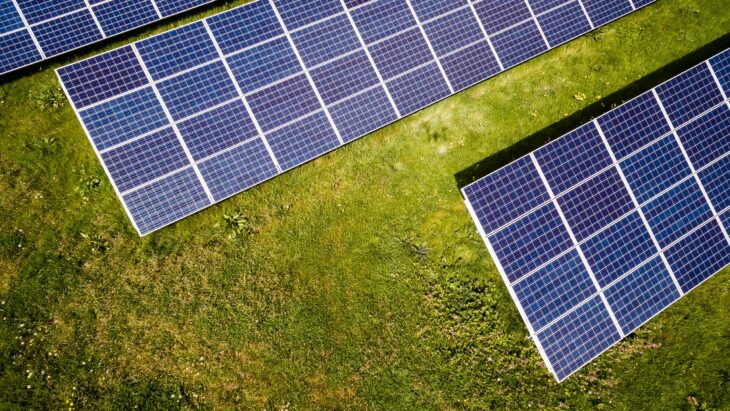Solar panels are an increasingly common source of renewable energy, and provide electricity for parts of the world lacking access to an electric grid. A solar panel is made up of dozens of smaller devices that convert sunlight to electricity called photovoltaic cells, or PV cells for short. A typical PV cell is about 5 square inches (or 13 square centimeters) and made of silicon, an affordable semiconductor material. Silicon absorbs energy from sunlight, which excites electrons to move from the bottom of the cell to the top, creating electricity. Since this process requires solar energy, a PV cell does not produce power at night, leaving off-grid locations without electricity during those hours.
Recently researchers have become interested in harnessing the power created from heat emitted off objects through a process called radiative cooling. The Earth is warmed during the day by the sun, and then cools at night by emitting long wave radiation back toward outer space. This is why a warm day can be followed by a much cooler night, especially when there are clear skies.
Typical PV cells are covered with silicon dioxide, which has a strong heat emission due to radiative cooling. This means the PV cell loses heat to its surroundings, leaving it several degrees cooler than ambient air at night. Currently, PV cells cannot convert this temperature change to electricity. Scientists have suggested designing PV cells that harvest this energy. However, this would require a semiconductor with different electrical properties than silicon, meaning silicon-based solar panels would need replacing to generate power at night.
Rather than designing a new PV cell, scientists from Stanford University modified an existing PV cell to convert heat into electrical energy. They incorporated a device that converts temperature changes into electrical energy called a thermoelectric generator, or TEG. A TEG is a solid state device, meaning it has no moving parts, and is made of a unique material that reacts when it is exposed to two different temperatures. The atoms in the material exposed to a hotter temperature get excited and release electrons that flow to the side of the material exposed to a cooler temperature. The scientists planned to attach a TEG between the cooler PV cell and the warmer ambient air.
When designing this modified PV cell, the scientists used thermodynamic calculations to learn when the TEG would generate the most electricity. They determined they needed to minimize the amount of heat flowing from ambient air, around the TEG, and to the PV cell because it would not contribute to the electricity generation of the TEG. Therefore, they surrounded the device in an insulated plastic chamber with an opening to accommodate the connection to ambient air.
The scientists also calculated that they needed to maximize the contact of the hot side of the TEG to the ambient air. To do so, they connected this side of the TEG to a standard computer part that transfers thermal energy, called a heat sink, and a base support. The heat sink provided a path for the ambient air to reach the TEG with little resistance. They also connected an aluminum sheet between the PV cell and the TEG to improve heat transfer. Then they applied a silicone grease to each component to enhance heat flow.
To test their modified PV cell, the scientists placed it on a rooftop with unobstructed access to the sky for four days and nights. During that time, they continuously monitored the power produced by the TEG, the PV cell, and the temperatures of the PV cell, heat sink, and ambient air.
The scientists observed the PV cell heated up during the day, with temperature peaking mid-day to approximately 15°C (59°F) above ambient air temperature. At night, the PV cell temperature fell below ambient air temperature, which was most pronounced on clear nights, at approximately 3°C (37°F) lower. The TEG extracted power from the temperature differences during both day and night.
The scientists detected a small amount of power from the TEG during the day, about 1% of what the PV cell produced from sunlight. However, during the night they measured a significant amount of power produced by the TEG, nearly 40% of the power produced by the PV cell during the day. They also noted more power was produced on clear nights than on cloudy nights.
The scientists suggested improving night-time power generation in future work by optimizing the PV cell and TEG contact area. They also suggest adding an electrical insulator layer on top of the PV cell to increase the amount of heat emitted during radiative cooling. They concluded that modifying existing PV cells could provide off grid locations with power at night.


